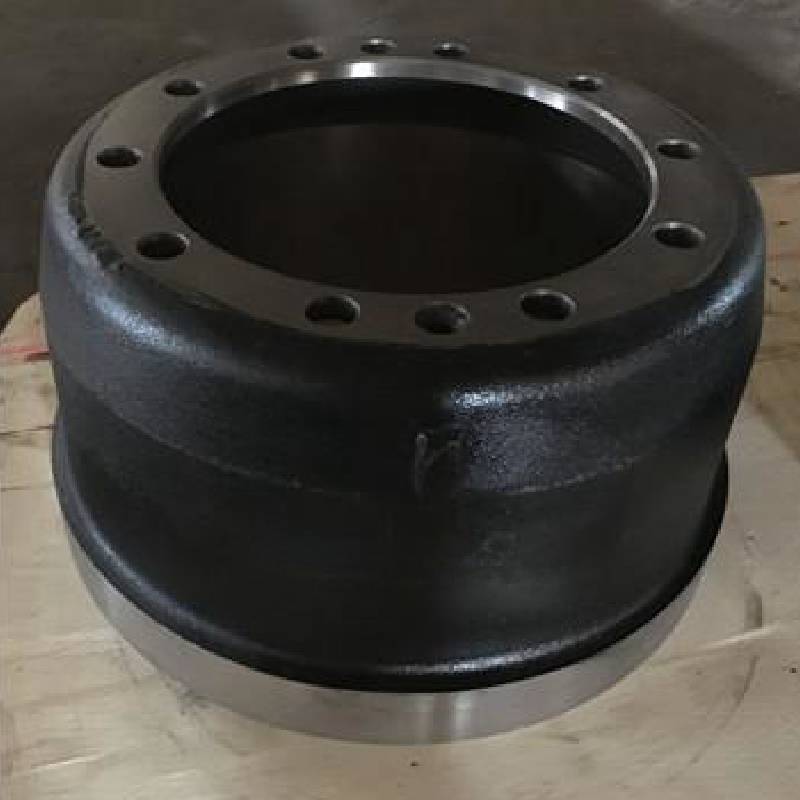Dec . 06, 2024 03:30 Back to list
brake drum manufacturing process
The Brake Drum Manufacturing Process A Comprehensive Overview
Brake drums are essential components in the braking systems of many vehicles, particularly in older models and heavy-duty applications. Their ability to dissipate heat and provide reliable braking performance makes them critical for safety. The manufacturing process of brake drums involves several crucial steps, each designed to ensure the final product meets stringent safety and quality standards. This article will outline the key phases of the brake drum manufacturing process.
1. Raw Material Selection
The journey of brake drum manufacturing begins with raw material selection. The primary material used for brake drums is cast iron, chosen for its excellent thermal conductivity, strength, and durability. There are several grades of cast iron, such as grey iron and ductile iron, each offering distinct advantages. Manufacturers typically select a specific grade based on the performance requirements and expected service conditions of the brake drum.
2. Melting and Casting
Once the raw materials are secured, the next step is the melting of the cast iron in a furnace. This process involves heating the iron to extremely high temperatures until it becomes molten. The molten metal is then poured into molds shaped like brake drums. These molds are made using sand casting techniques, which are cost-effective and allow for intricate designs. After pouring, the molten iron undergoes a cooling process, solidifying into the shape of the brake drum.
3. Machining
After the cast brake drums have cooled and solidified, they undergo machining. This process is essential for achieving the precise dimensions and surface finish required for optimal performance. Machining involves several operations, including turning, drilling, and grinding. Specialized equipment, such as CNC (Computer Numerical Control) machines, is often used to ensure accuracy and consistency. During this phase, the brake drum's inner and outer surfaces are smoothed, and any mounting holes are drilled to accommodate the brake components.
4. Heat Treatment
brake drum manufacturing process

To enhance the mechanical properties of the brake drums, heat treatment is employed. This process involves heating the machined drums to a high temperature and then cooling them rapidly. Heat treatment improves the hardness and strength of the cast iron, ensuring the brake drums can withstand the high stresses and temperatures generated during braking. This stage is crucial for the longevity and reliability of the brake drums.
5. Surface Treatment
After heat treatment, the brake drums undergo surface treatment to prevent corrosion and enhance performance. Common surface treatment processes include sandblasting, shot peening, and electroplating. These treatments not only improve the aesthetic appeal of the brake drums but also create a protective layer that extends their lifespan. Additionally, surface treatments help to reduce unwanted vibrations, contributing to a smoother braking experience.
6. Quality Control
Quality control is a vital aspect of the brake drum manufacturing process. After all production steps are completed, each drum is subjected to rigorous testing to ensure it meets industry standards and specifications. This may include dimensional checks, visual inspections, and performance testing under simulated braking conditions. Any drums that do not meet the necessary quality standards are rejected and reprocessed, ensuring only the best products reach the market.
7. Final Assembly and Packaging
Once the brake drums have passed quality control, they are prepared for final assembly and packaging. This phase involves attaching any necessary components, such as wheel studs or hub assemblies, and then carefully packing the drums for shipment. Proper packaging is crucial to prevent damage during transportation and to ensure that the product arrives in pristine condition.
Conclusion
The manufacturing process of brake drums encompasses a series of well-defined steps, each critical to producing a safe and reliable product. From raw material selection to final assembly, manufacturers utilize advanced techniques and rigorous quality checks to ensure their brake drums meet the highest standards. As automotive technology continues to evolve, so too will the processes involved in manufacturing essential components like brake drums, ultimately contributing to improved vehicle safety and performance.
-
HINO Industrial Solutions - ¡Ң���ຽ��е��������˾ | Advanced Technology&Reliability
NewsJul.13,2025
-
HINO Industrial Efficiency-Jiangsu Hino Industrial|Productivity Optimization&Cost Reduction
NewsJul.12,2025
-
HINO-¡Ң���ຽ��е��������˾|Advanced Industrial Solutions&Energy Efficiency
NewsJul.12,2025
-
Premium Brake Drum Iveco – Durable Drum Brake Drum & Brake Shoe Solutions
NewsJul.08,2025
-
High-Performance Brake Drum Liza for Enhanced Safety Reliable Drum Brake Drum & Brake Shoe Solutions
NewsJul.08,2025
-
High-Quality Brake Drum MAZ – Durable Drum Brake Drum & Brake Drum and Brake Shoe for Optimal Performance
NewsJul.07,2025
